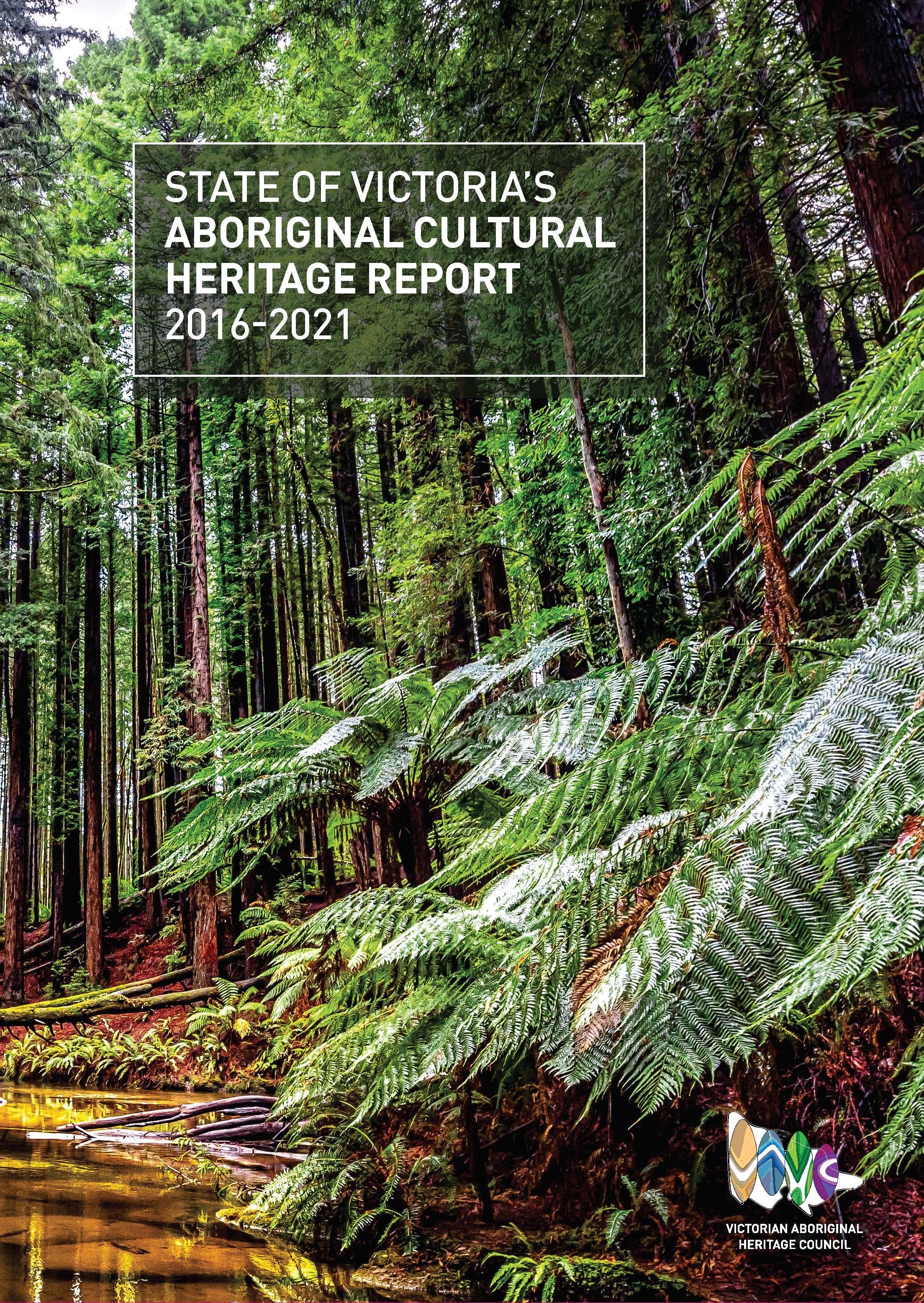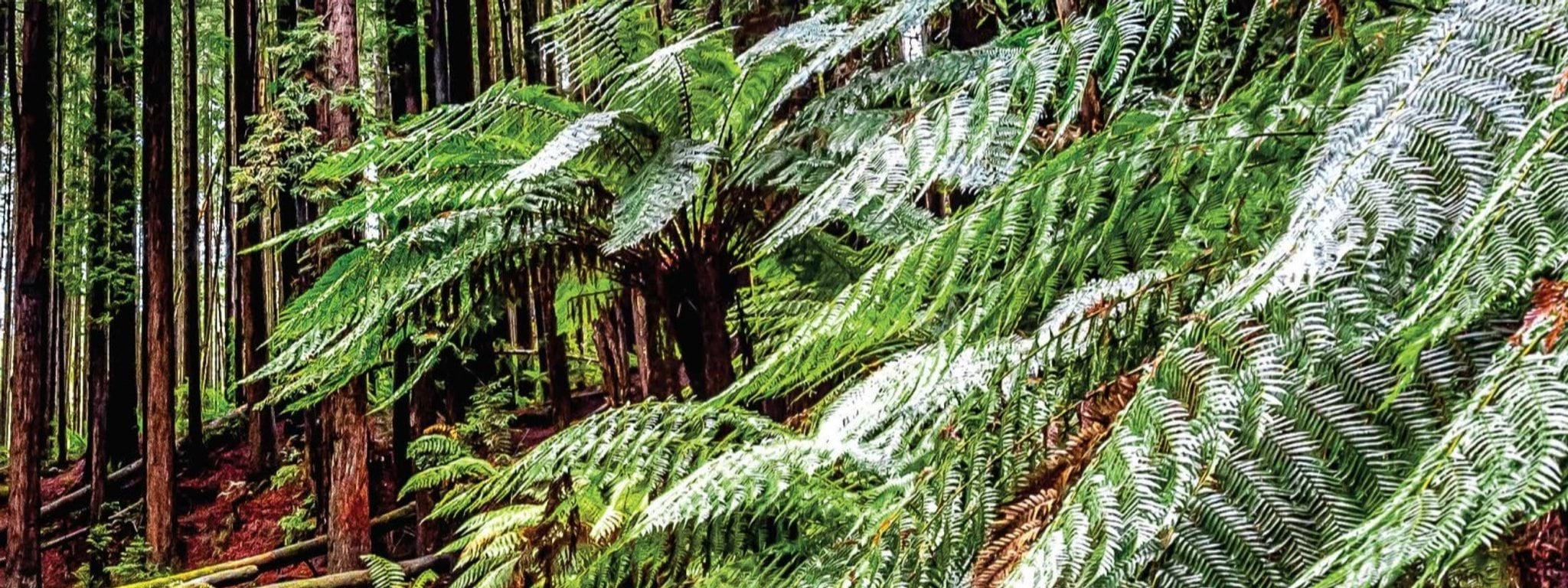“liwik nugal-nganjin marram-nganjin dadbagi-k
dudandun nugal-nganjin marram-nganjin dadbagi-k
biik nugal-nganjin marram-nganjin dadbagi-k yumaa-djerri-ngat.”1
From this place of respect, we have a responsibility to bring others in and to share our Culture, without relinquishing control and connection. We do this by talking about our responsibilities as Traditional Owners - to Country, Culture and Community. In listening to and respectfully supporting Traditional Owners, we can all benefit from the oldest living Cultures on earth.
This report establishes a benchmark for where we are now and where we want to be. It enables everyone to critically assess how they engage with Aboriginal Cultural Heritage in Victoria, how they can be better informed and how we can all better support Traditional Owners to control and manage their Cultural Heritage. We do this together,
“ngalu bappak mana dardee loong wurk work bramung-ma.” 2
The Victorian Aboriginal Heritage Council was created under the Aboriginal Heritage Act 2006, ensuring that Traditional Owners were responsible for key statutory functions relating to the preservation and protection of Victoria’s rich Aboriginal Cultural Heritage.
It is Victoria’s only independent statutory body comprised entirely of Victorian Traditional Owners. Subsequently, the critical decisions it makes regarding Aboriginal Cultural Heritage inherently embeds self-determination in its policy and practice. Importantly, Council has custodianship of all Aboriginal Ancestral Remains and Secret or Sacred Objects that are not in the care of their Traditional Owners and registered Aboriginal parties (RAPs)
in Victoria.It was important to Council that an independent assessment of the state of Aboriginal Cultural Heritage in Victoria was undertaken, ensuring transparency and best practice research, consultation and analysis. Dr Terri Janke is a Wuthathi/Meriam woman and an international authority on Indigenous Cultural and Intellectual Property (ICIP). It was essential that in undertaking this statutory function, Council decolonised the process, ensuring it was undertaken with an Aboriginal perspective and embedded with Aboriginal approaches and understandings.
As members of our communities, as descendants of our Ancestors and as members of a statutory authority, we felt a profound responsibility to speak frankly in this report.
We acknowledge that government is supporting Traditional Owners, the Aboriginal Heritage Act 2006 is protecting Cultural Heritage, and that some non-Aboriginal People are willing to acknowledge Victoria’s painful history.
But it’s not enough.
We need to enshrine the government’s commitment to self-determination in legislation; to embed it in the transfer of power for Aboriginal Culture, Heritage and wellbeing to Aboriginal People.
We need the casual and overt racism to stop.
We need the dismissal of Victoria’s shameful history to stop and be willing to have uncomfortable conversations.
We need to end the theft of our cultural knowledge and creative expression.
We need to acknowledge the multiplicity of Aboriginal Cultures, rather than compressing them into one homogenous unit.
We need the Victorian community who live on our beautiful Country to respect Traditional Owners as the only authority on their Aboriginal Cultural Heritage.
As identified in this report, self-determination is an existing right. However, government should:
“use the legal and policy leavers at their disposal to facilitate Aboriginal people in exercising these rights. In order for the Victorian government to play an effective supporting role, the heritage management process must be decolonised.”
We embody the principle that we must ourselves determine our lives, our rights, our responsibilities, our Cultures and our futures. We have a collective responsibility and inherited right to our Cultures and Countries that’s as unique as it is fundamental.
We must be enabled to achieve self-determination through our embodiment of the oldest living Cultures on earth.
“nindi dinatji nindi ngujarn nindi gundj
nindi djinan yerribi dununak yalagan dinatji
garek ngalak, njarala ngalak bala-bala nindi goorabung.” 3In 2007, the United Nations General Assembly adopted the significant Declaration on the Rights of Indigenous Peoples. However, there is still much to be done in realising this commitment and Council calls for all Victorians to join us in affirming that:
“Indigenous Peoples are equal to all other peoples, while recognising the right of all peoples to be different, to consider themselves different, and to be respected as such.”
Until the Declaration is recognised as the benchmark for all engagement with, legislation concerning and policy controlling Aboriginal Peoples; we’re just dressing in new clothes the mission management of the past.
This report joins a suite of strategic documents that should govern all our engagement with Aboriginal Peoples. Some are old, like the Declaration, and some are new, like Council’s own contribution.
Council felt that what was missing from the national discussion about Cultural Heritage was a set of Best Practice Standards to guide the engagement of all Australians with Aboriginal People and their Cultural Heritage. The resulting Best Practice Standards in Indigenous Cultural Heritage management and legislation are included in Dhawura Ngilan - A vision for Aboriginal and Torres Strait Islander heritage in Australia.
Supported by the Chairs of Australia’s national, state and territory Indigenous heritage bodies, these two documents provide a roadmap for improving approaches to Aboriginal and Torres Strait Islander heritage management in Australia.
This report gives a frank evaluation of where we are, acknowledges that we live in a society impacted by the past and charts a new course forward. Council’s vision is of a place where language is spoken easily, Traditional Owners are respected, Countries are cared for appropriately and Cultures are proudly lived by all our Peoples.
“barimbanganak barim gurrkanganak wukinangatjaniyn." 4
Council will continue to strive to reshape the landscape in which Aboriginal Cultural Heritage exists, is managed and is experienced by Traditional Owners and the wider Victorian community. It is essential to our wellbeing and our right as Aboriginal Peoples that we engage with Culture and Country in a meaningful and respectful way. From reading this report, we know that this is feasible. However, there are fundamental shifts that first need to happen in the legislative, policy and broader community.
In assessing where we are now, the community has developed a vision for a future Victoria as a place where:
- Aboriginal Cultural Heritage has no barriers;
- Aboriginal Cultural Heritage is holistic;
- Aboriginal Cultural Heritage is Aboriginal-led and decisions are made by Aboriginal people;
- Aboriginal Cultural Heritage supports economic prosperity;
- Aboriginal Cultural Heritage is better understood and respected by all Victorians.
To realise this vision, 30 recommendations have been made. We hope that, when we next report on the state of Victoria’s Aboriginal Cultural Heritage in 2026, we will see that great progress has been
made. We must work together to realise this vision.Mick Harding
Chairperson 2021-22
Download and read the report;
VAHC State of Victorias Aboriginal Cultural Heritage Report 2016-2021(opens in a new window)PDF 30.79 MB
The Victorian Government is committed to providing a website that is accessible to the widest possible audience, regardless of technology or ability. This page may not meet our minimum WCAG AA accessibility standards.
If you are unable to read any of the content of this page, you can contact the content owners for an accessible version:
Contact email: vahc@dpc.vic.gov.au
Contact number: 03 9922 7002-
Translated from the Taungurung language:"Our Ancestors we take care of, Our beliefs we take care of, Our Country we take care of, We share with everyone..".
-
Translated from the Gunaikurnai language: "Together our heart is strong, like the sap in the wattle tree that keeps the tree growing, it makes it strong, keeps it alive. It represents the heart, mind and soul of the people to be strong in their culture. Loong wurk wurk bramungma represents the many relationship of family who belong to their lands."
-
Translated from the Monero Ngarigo language: "Our land, our mother, our home, Our footprintsconnect us to our beautiful lands, Sit quiet, sit and listen to our talk about our future."
-
Translated from the Dja Dja Wurrung language: "The knowledge, lore, cultural responsibilities and authority of the Traditional Owners they represent is theirs alone, inherited from their Ancestors."
-
Updated
